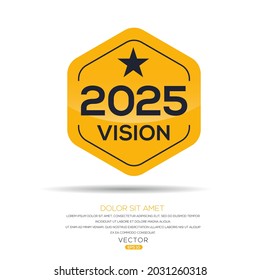The Significance Of The 2025 Icon Break: A Technological Shift
The Significance of the 2025 Icon Break: A Technological Shift
The Significance of the 2025 Icon Break: A Technological Shift
Introduction
With great pleasure, we will explore the intriguing topic related to The Significance of the 2025 Icon Break: A Technological Shift. Let’s weave interesting information and offer fresh perspectives to the readers.
Table of Content
The Significance of the 2025 Icon Break: A Technological Shift
![]()
The year 2025 marks a significant milestone in the evolution of technology, particularly in the realm of user interfaces (UIs) and the way we interact with digital products. This shift, often referred to as the "2025 Icon Break," represents a departure from the traditional reliance on icons as the primary means of navigation and interaction.
The Rise of the Icon:
For decades, icons have been the cornerstone of user interface design. Their intuitive nature and visual simplicity have made them readily understandable across language barriers and cultural contexts. Icons, by their very nature, are designed to be universally recognizable, representing actions or objects through visual cues. This approach has been instrumental in simplifying the digital experience, making technology accessible to a wider audience.
The Limitations of the Icon:
However, as technology has advanced and the complexity of digital products has increased, the limitations of icons have become increasingly apparent.
- Limited expressiveness: Icons struggle to convey nuanced actions or complex functionalities. They often rely on assumptions about user understanding, leading to potential ambiguity and confusion.
- Scalability issues: With the proliferation of devices and screen sizes, icons can become pixelated and difficult to discern, particularly on smaller displays.
- Accessibility concerns: Icons are not always accessible to users with visual impairments or disabilities, leading to a less inclusive digital experience.
The 2025 Icon Break: Embracing a New Paradigm:
The "2025 Icon Break" represents a paradigm shift in user interface design, moving beyond the limitations of traditional icons and embracing a more intuitive and dynamic approach to interaction. This shift is driven by several key factors:
- Emergence of new technologies: Advancements in natural language processing (NLP), artificial intelligence (AI), and voice recognition are paving the way for more natural and intuitive user interfaces.
- Changing user expectations: Users are increasingly demanding more personalized and context-aware experiences, demanding interfaces that adapt to their needs and preferences.
- Growing focus on accessibility: Inclusive design is becoming a paramount concern, emphasizing the need for interfaces that cater to diverse user needs and abilities.
Key Elements of the 2025 Icon Break:
The "2025 Icon Break" is not about completely eliminating icons, but rather about reimagining their role and exploring alternative methods of interaction. Some key elements of this shift include:
- Natural Language Interfaces: Voice-based interfaces and conversational AI are becoming increasingly prevalent, allowing users to interact with digital products using natural language commands.
- Contextualized Interaction: User interfaces are becoming more context-aware, anticipating user needs and presenting relevant information based on their location, history, and preferences.
- Gestural Interaction: Utilizing touch gestures, hand movements, and other intuitive inputs, users can interact with digital products in a more natural and engaging way.
- Augmented Reality (AR) and Virtual Reality (VR): These technologies are blurring the lines between the physical and digital worlds, creating immersive experiences that go beyond traditional screen-based interfaces.
Benefits of the 2025 Icon Break:
This shift towards a more intuitive and dynamic user experience offers numerous benefits:
- Enhanced accessibility: Natural language interfaces and other alternative interaction methods make digital products more accessible to users with diverse abilities.
- Improved user engagement: More intuitive and personalized experiences lead to increased user satisfaction and engagement.
- Increased productivity: Streamlined interfaces that anticipate user needs can enhance productivity and efficiency.
- Unlocking new possibilities: New technologies and interaction methods open up possibilities for innovative and engaging user experiences.
FAQs:
Q: Will icons disappear entirely after 2025?
A: No, icons will likely remain a part of the user interface landscape, but their role will evolve. They will be used in conjunction with other interaction methods, providing visual cues and context for more complex interactions.
Q: How will the 2025 Icon Break impact the design process?
A: Designers will need to adopt a more holistic approach, considering not only visual aesthetics but also the user experience across multiple interaction methods. This will require a deeper understanding of user behavior, accessibility principles, and emerging technologies.
Q: What are some examples of the 2025 Icon Break in action?
A: Examples include smart home devices that respond to voice commands, mobile apps that utilize gesture-based controls, and virtual reality games that rely on immersive experiences.
Tips for Embracing the 2025 Icon Break:
- Stay informed: Keep abreast of emerging technologies and trends in user interface design.
- Embrace experimentation: Explore new interaction methods and technologies to understand their potential.
- Focus on user needs: Design interfaces that are accessible, intuitive, and cater to diverse user needs.
- Prioritize accessibility: Ensure that interfaces are inclusive and usable by individuals with disabilities.
- Collaborate with experts: Partner with experts in fields like AI, NLP, and accessibility to develop innovative and effective user experiences.
Conclusion:
The "2025 Icon Break" represents a pivotal moment in the evolution of user interfaces. It signals a move away from traditional icons and towards a more intuitive, dynamic, and accessible approach to interaction. By embracing this shift, we can create digital experiences that are more engaging, accessible, and fulfilling for users. The future of user interface design lies in harnessing the power of emerging technologies to unlock new possibilities and create truly immersive and personalized experiences.
![]()







Closure
Thus, we hope this article has provided valuable insights into The Significance of the 2025 Icon Break: A Technological Shift. We hope you find this article informative and beneficial. See you in our next article!